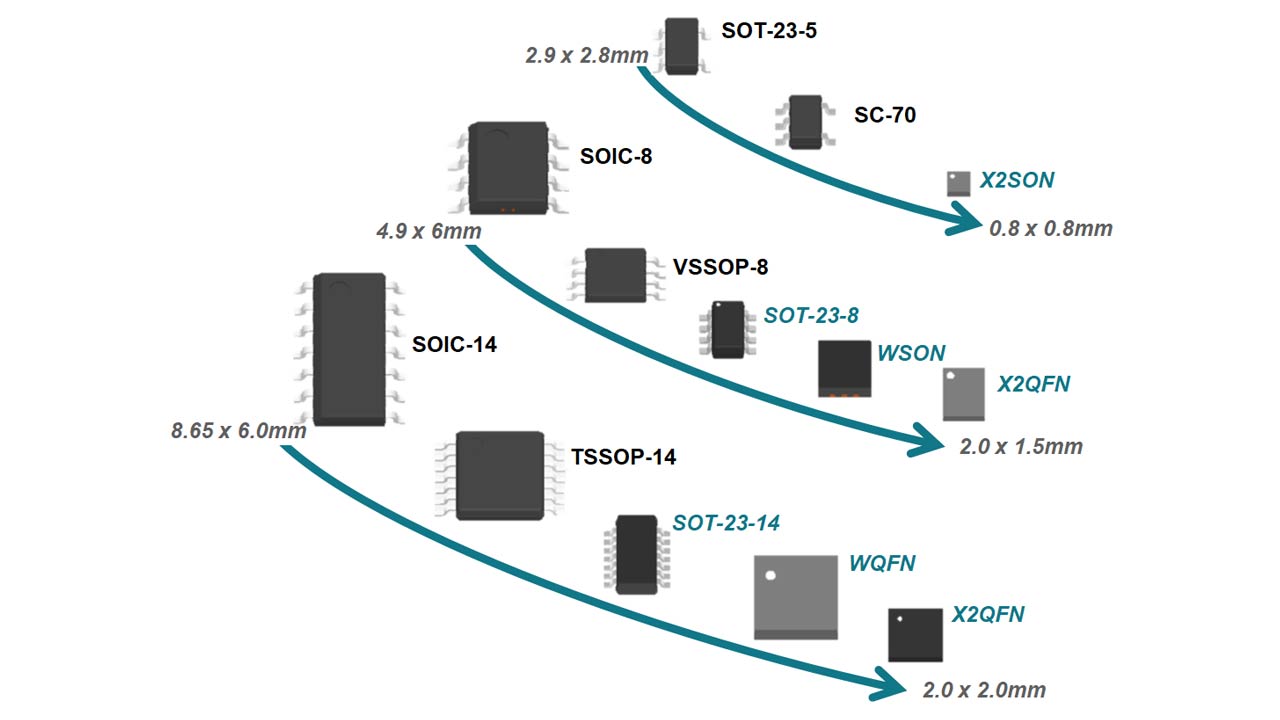The first time I visited a Texas barbecue restaurant, I was astounded by all the different types of meat on the menu and couldn’t decide what I wanted. Luckily, the restaurant offered a three-meat plate so that I could try a sample of the options.
As a design engineer looking for an operational amplifier (op amp), you also have a plethora of options. Plus, with the aggressive timelines of today’s production cycles, you need to make a decision fast. Choosing the wrong op amp for the job can cost time and money.
In this article, we'll discuss 48 unique amplifiers that are part of TI's versatile op amp portfolio, including the new TLV9001, TLV9052, TLV9064, which are offered across 16 different packages, including the industry’s smallest single- and quad-channel packages. In this technical article, you’ll learn how this new op amp family fits a variety of project needs, enabling reduced printed circuit board (PCB) space and offering versatile bandwidth options to provide more gain for your signal chain.
With the largest op amp portfolio on the market, you can choose the exact channel count, speed and size your system needs.
Design versatility through performance
Figure 1 outlines the full device family, with similarities highlighted at the top. The three subfamilies are interchangeable because they use the same supply voltage, input and output voltage range, and offset voltage. Additionally, their similar low, resistive output impedances minimize stability issues.

Figure 1: Amplifier family comparison
Each subfamily provides unique performance benefits, however. For example, if you initially used the TLV9002 in a single-supply low-side, unidirectional current-sensing solution with output swing to GND circuit for motor current sensing, but later determined that a higher gain and a faster slew rate were required in order to handle large motor-current transients, you could easily switch to the higher-bandwidth, pin-to-pin-compatible TLV9052 without a major redesign effort. This is possible because each subfamily is offered in the same 16 package options, covering all three channel configurations.
Package flexibility
Figure 2 lists the details of each package option. The Industry Standard column determines whether the package is available from other suppliers for second-sourcing options. The Shutdown column highlights which packages feature shutdown functionality, which helps reduce overall power consumption.
While the majority of the small package options are quad flat no-lead (QFN) packages, I want to highlight one that is not. The dual-channel, small-outline transistor (SOT)-23-THIN package uses the body of a single-channel SOT-23 package but has eight pins instead of the traditional five or six pins. This can be a great alternative to the much larger leaded packages such as small-outline integrated circuit (SOIC), thin-shrink small-outline package (TSSOP), or very-thin-shrink small-outline package (VSSOP). It’s also possible to use a dual-layout technique in order to multi-source an eight-pin SOT-23 and a traditional leaded package. The Analog Design Journal article, “Second-sourcing options for small-package amplifiers,” provides additional details. However, I recommend reviewing the QFN options if you are trying to minimize PCB space.

Figure 2: Amplifier family package options
Size breakthroughs
These three amplifier sub-families feature the industry’s smallest single-and quad-channel packages. Compared to competing small-size devices, TI’s single-channel 0.8-mm-by-0.8-mm extra-small-outline no-lead (X2SON) package is 13% smaller, while its 2.0-mm-by-2.0mm extra-small QFN (X2QFN) package is 7% smaller. These packages along with the dual-channel 1.0-mm-by-1.5mm X2QFN package, give you multiple options to help reduce PCB area. You can see all three packages along the right side of Figure 3.

Figure 3: The road to smaller packages
Because manufacturing technologies can limit the use of ultra-small QFN packaging due to a small pin pitch, TI also offers multiple small package options, with varying pin pitch. The application report, “Designing and Manufacturing with TI’s X2SON Packages” provides layout and routing guidance when it comes to these packages.
Wrapping up
Some say that too many options can lead to choice paralysis. I say that, whether you’re in Texas trying to decide what barbecue you want or a design engineer trying to choose an amp, the more options the better. The next time you’re starting a design, choose an op amp family that that lets you pick from three different performance levels and, one of 16 unique package options, and save PCB area when you need it with the industry’s smallest single-and quad-channel packages.
Additional resources
- Evaluate eight of the small package options by ordering the small amplifier dual inline package evaluation module.
- See a detailed comparison between the TLV9002, TLV9052, and TLV9062 specifications.
- Simulate designs using the TLV9002, TLV9052 and TLV9062 TINA-TI? software Spice models.
- Explore the world’s largest amplifier portfolio.






